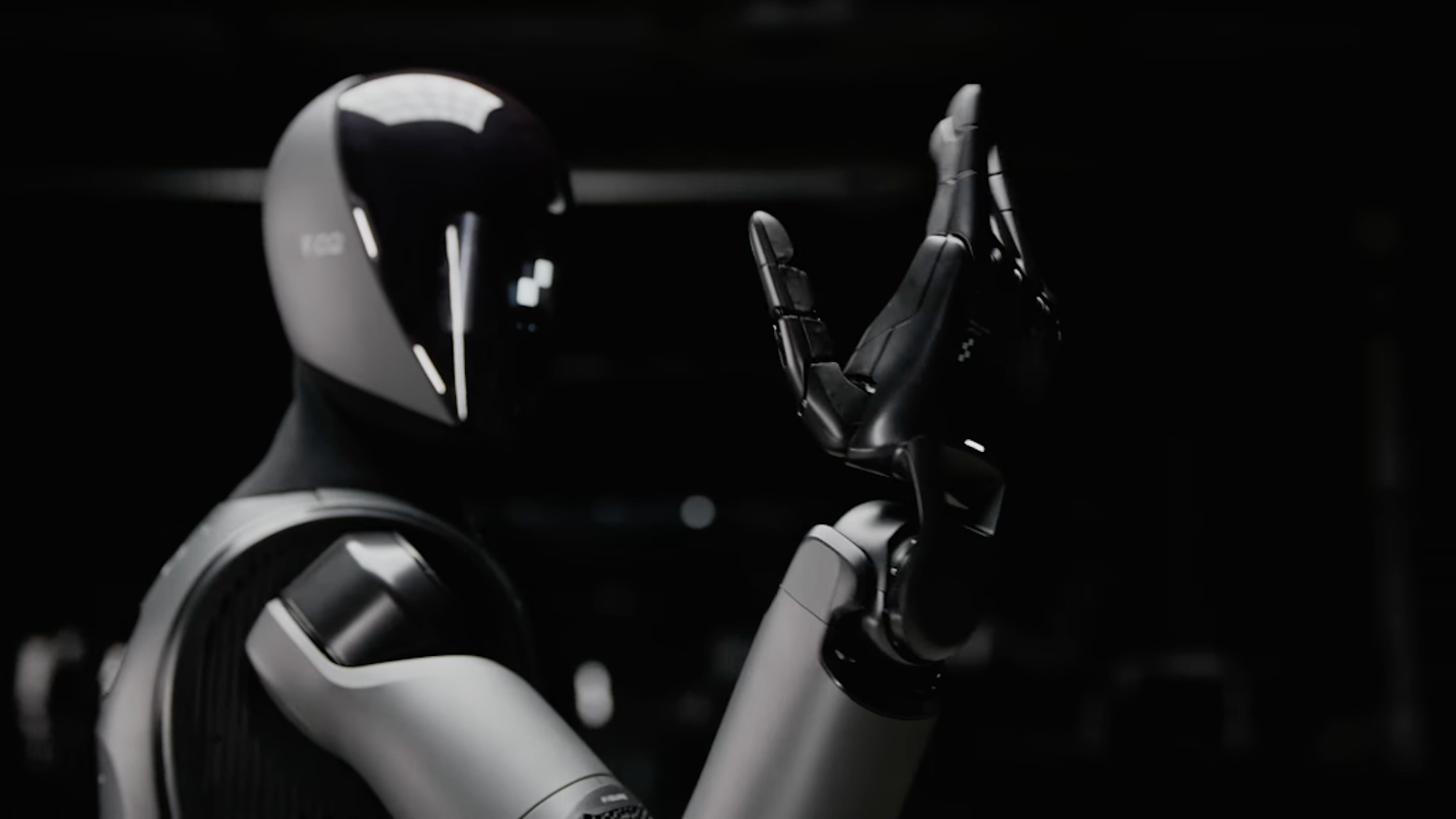Humanoid robots are no longer a rare sight (at least in company promotional videos), but Figure is one of the most well-funded companies aimed at introducing bipedal machines into factories. Earlier this year, the company announced a partnership with BMW to bring their robots to the automaker’s Spartanburg, South Carolina, manufacturing facility. On August 6, Figure debuted the first look at the Figure 02, their newly upgraded iteration promising artificial intelligence speech communication capabilities through a separate collaboration with OpenAI.
Tuesday’s two-minute sizzle reel of the Figure 02 includes a slightly slimmed down, matte black frame compared to the 01’s bulkier, shiny chrome body. Its five-fingered, articulated hands are apparently a fourth generation design providing 16 degrees of freedom and what the company calls “human-equivalent strength.” But in terms of actual physical achievements, the tasks on display in Tuesday’s clip don’t differ much from what Figure showed off for its 01 model. Multiple 02 bots are seen shuffling across BMW’s Spartanburg factory floor, and transporting sections of car frame between machine stations before placing them in their designated positions. Figure claims the 02 can also self-correct and learn from its mistakes. But these examples are still far removed from the company’s goals of soon providing robots able to “tackle more complex job functions” in warehouses and factories.
OpenAI’s integration involves onboard speech-to-speech reasoning supposedly allowing Figure 02 to “talk” with humans through speakers, as well as a vision language modeling (VLM) system for capturing and interpreting visual data through six cameras situated on its head and body. Figure didn’t provide any footage of its robot conversing with humans in its promo video.
[Related: BMW plans to put humanoid robots in a South Carolina factory to do… something.]
Other improvements include a 2.25 KWh battery providing 50 percent boost in runtime, giving it a roughly 7.5 hour lifespan between recharges, fully concealed wiring, and three times the computation and AI inference power as its previous generation. According to Figure, this “enables real-world AI tasks to be performed fully autonomously.”
But the company will need to deliver real, actionable results (and profits) sooner than later, especially as industry experts increasingly voice concerns that the wildly inflated AI hype has produced a bubble that appears ready to burst. Silicon Valley has spent the past few years promising revolutionary generative AI systems will transform jobs, entertainment, and everyday life—not to mention potentially bring about humanity’s extinction. Companies like Figure and Tesla also contend that integrating generative AI into bipedal robots will transform labor markets, but have so far mostly just delivered sleek, heavily edited videos without actually delivering any products to factories.
[Related: OpenAI wants to make a walking, talking humanoid robot smarter.]
While the Figure 02 robots tested their features and performed AI data collection during “use case training” at BMW’s facility, whether or not this version of the humanoid machines will actually deploy to any factories remains to be seen. Figure touts a “Master Plan” on its website that envisions bipedal robots handling physical labor humans supposedly don’t want to do, helping out in households, and even traveling into space to “build new worlds.”




















Discussion about this post